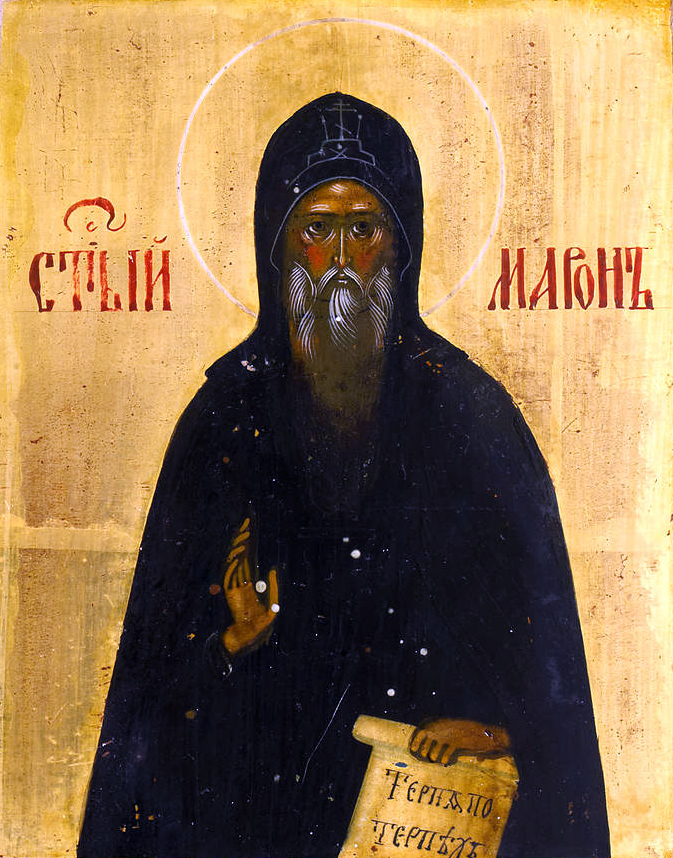
The Christian Churches of the East: the Maronites
By Riccardo Burigana
The Maronite Church has a long tradition behind it since its foundation dates back to the first centuries of Christianity; in fact, it owes its name to St. Maron, who lived in the late fourth and early fifth centuries, linked to the Patriarchate of Antioch, and committed to a profoundly evangelical way of life that prompted him and his immediate followers to take a stand in the Christological controversies on which the Ecumenical Council of Chalcedon (451) intervened, establishing the dual nature in one person. From Maron's legacy thus began a tradition that, even before the arrival of the Muslims, with the conquest of much of the Byzantine Empire, had to face persecution and pressure from local communities that refused to recognize the Council of Chalcedon, so much so that the first Maronites were forced to move to the more inland areas of today's Lebanon.
Fidelity to the Council of Chalcedon, especially after the arrival of the Muslims, led to the creation of a series of communities, in communion with each other, with their own hierarchy that, only in the early 12th century, rediscovered and established a relationship of communion with the Church of Rome. This relationship became a fundamental element in the life of the Maronite Church, so much so that, after centuries of emphasizing from Rome and Lebanon the idea that there had never been a division, so as to emphasize the profound difference between the Maronite Church and the other Churches in the region, the foundation of a Maronite College in Rome came about in 1584. This foundation was within the policy of spiritual disciplining promoted by the Church of Rome with the Council of Trent and manifested an interest in the fate of the Maronite Church, which would find support from the Kingdom of France in an attempt to survive the new policy of the Ottoman Empire, which, while tolerant of Jews and Christians, looked with concern at communities, such as the Maronite ones, that were making themselves the bearers of national demands.
The founding of the College and the renewed interest of the Church of Rome also brought about structural changes. After a series of interventions by Propaganda Fide that did not lead to real and permanent changes, in 1736 the Synod established the number of eparchies (eight), defining territorial jurisdictions for each (Aleppo, Beirut, Jbeil united with Batrun, Cyprus, Damascus, Baalbek, Tripoli and Tyre-Sidon), receiving approval from Rome in 1742. At the beginning of the 20th century, when by then nationalist claims within the Ottoman Empire were overt, the patriarchal vicariate was created (1904) and the sees of Tyre and Sidon were separated (1906), leading to a situation that passed unscathed by the wartime events that so altered the geopolitical situation in the Middle East, opening a series of issues that were not resolved with the independence of Lebanon in 1943.
Since then, the Maronite Church has been a protagonist in the political events of the region, particularly in Lebanon, where it has its headquarters, in Bkerké, while the diaspora communities multiplied, which were the result of a constant flow of migration brought about by the deteriorating economic situation and political instability, bloodied by armed clashes and attacks, which put an end to the definition of Lebanon as the "Switzerland of the Middle East," for freedom, stability and prosperity. In terms of doctrine, the Maronite Church insists on its Antiochian matrix for the rite, the centrality of the Council of Chalcedon, to the patriarchal structure, with a privileged place for the monastic experience, to its rootedness in Lebanon and fidelity to the union with Rome since its birth, declined over the centuries in many ways but never failing. As of March 25, 2011, the Maronite Church, organized into 28 ecclesiastical circumscriptions present in 16 countries (Lebanon, Argentina, Australia, Brazil, Canada, Cyprus, Colombia, Egypt, France, Jordan, Israel, Mexico, Nigeria, Palestine, Syria, and the United States), is led by Béchara Boutros Raï, who holds the title of Patriarch of Antioch and All the East, created cardinal by Benedict XVI in the public consistory on Nov. 24, 2012. The Maronite Church, also precisely because of its long, particular and troubled history, has a very special responsibility for the Middle East, especially for Lebanon, for the country's present and future.
